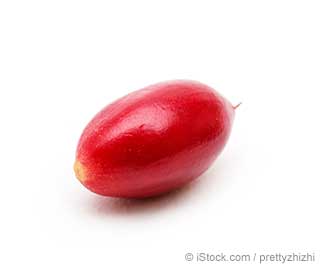Morphing Miracle Berry
Botanical name: Synsepalum dulcificum

Fruits are generally enjoyed on their own because they are nutritious and have a pleasant taste. However, “miracle fruit” or “miracle berry” is one such oddity. It’s typically not consumed for its own taste and health benefits, but rather, it is eaten before indulging in another food. Discover how you can make use of miracle fruit in your daily diet below.
What Is Miracle Fruit?
Miracle fruit (synsepalum dulcificum) is an evergreen shrub native to West Africa, and it is believed to be eaten by Africans for hundreds of years prior to its introduction to the Western world. It was discovered in 1725 by Chevalier des Marchais, a French cartographer commissioned by King Louis XV to travel and document the west coast of Africa.1,2 During one of his excursions, he noticed that Africans ate the berries before eating sour food, and he passed down this finding to his countrymen.3
The berry itself has a mildly sweet tang with a firm pulp surrounding a bitter seed.4 If you’re thinking of growing your own miracle fruit, be aware that the plant can reach up to a height of 20 feet outdoors, and 5 feet indoors. It tolerates moderate shade, but if grown indoors, the light must be very bright. Lastly, the soil must have good drainage, must be slightly acidic and watered regularly.5
The Benefits of Miracle Fruit
Miracle fruit’s benefits lie in its ability to trick your tongue to change the flavor of your favorite foods. Using this strategy, it can help with:
• Weight loss — Each miracle fruit berry contains only 1 calorie. In addition, you can take advantage of its taste-altering properties to modify the food you’re currently eating.
For example, you can remove sugar from sweet recipes such as key lime pie and strawberry shortcake. By removing sugar from your diet, you’re helping your body avoid gaining excess weight and improving your health in the long run.6
• Diabetes — Aside from helping you remove sugar from your food, miracle fruit itself may help improve your insulin sensitivity. In one study, researchers fed mice a fructose-rich diet for four weeks, and afterwards fed them miracle fruit three times a day for three days. After the study, the researchers noted that the mice had reversed their glucose-insulin index, suggesting that miracle fruit may help improve insulin sensitivity in diabetics.7
• Antioxidants — Miracle fruit is suggested to have good antioxidant properties, which can help kill free radicals throughout your body. In one study, researchers identified 12 phenolics, along with other antioxidants, in miracle fruit. Most of the benefits come from its flesh, which has been found to inhibit the oxidation of the fatty acids in fish oil as well.8
Different Uses of Miracle Fruit
Ever since miracle fruit was discovered by the Western world, it has been used for its flavor-altering properties, and this still holds true today. But how does it exactly work?
The secret to miracle fruit’s “miracle” powers is a unique protein appropriately named “miraculin.”9 At first, it is believed miraculin works by changing the shape of your sweet receptor proteins. They normally respond to sugars to register a sweet flavor, but since the composition has been altered, acidic foods become sweet as well.10
However, according to a recent study from the University of Tokyo, this explanation is not exactly correct. According to the author, miraculin latches to the sweet receptors and suppresses them. And when your tongue comes into contact with acidic food, miraculin supercharges the sweet receptors’ signals. The sweetness occurs due to miraculin gaining extra protons that change shape and influence the receptors.11
Aside from miraculin, miracle fruit contains the following nutrients:
Miracle Fruit Berry Nutrition Facts
Serving Size: 2 Berries
| Calories |
1 |
|
| Calories from Fat |
|
|
| Total Fat |
|
|
| Saturated Fat |
|
|
| Trans Fat |
|
|
| Cholesterol |
|
|
| Sodium |
0 mg |
0% |
| Total Carbohydrates |
0 g |
0% |
| Dietary Fiber |
0 g |
0% |
| Sugar |
0 g |
|
| Protein |
0 g |
|
| Calcium |
Iron |
|
*Percent Daily Values are based on a 2,000 calorie diet. Your daily values may be higher or lower depending on your calorie needs.